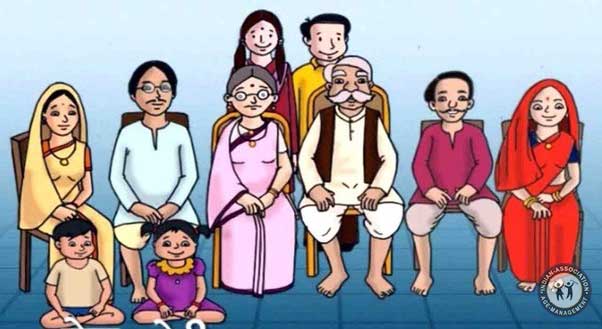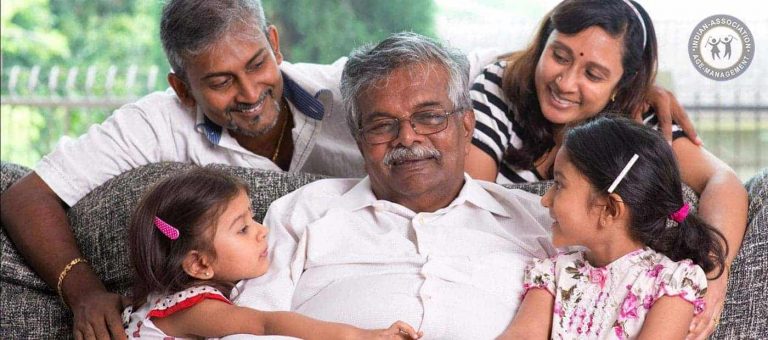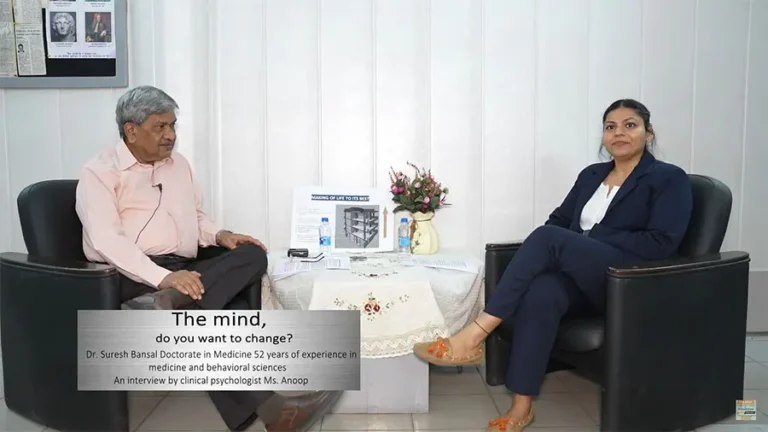Aging and the Law: Global Context and the Indian milieu
Dr. R. R. Kishore, MD, LLB
Advocate Supreme Court of India
President, Indian Society for Health Laws and Ethics,
Telfax: 91-11-40570705; Mob: 9667937465
email: [email protected]
That time of year thou mayst in me behold
When yellow leaves, or none, or few, do hang
Upon those boughs which shake against the cold,
Bare ruined choirs, where late the sweet birds sang.
William Shakespeare (1)
INTRODUCTION
In a world where priorities in health range from safe drinking water to breast prosthesis, promises of biotechnology range from humanizing animals to creating new life forms, and the concerns of human rights range from the rights of the dead to the rights of the unborn, morality is on the crossroads and in many areas the concepts of right and wrong are not clear. In such a vast panorama, the subject of aging attracts a wide range of disciplines, including economics, demography, biotechnology, medicine, public health, sociology, bioethics and the law, among others. In this paper I will reflect on the legal dimensions of aging in a broader social context, underlining the global perceptions and the Indian milieu
In view of the fact that all mortals age and die the desire to defy aging seems contrary to the order of nature. Even the stars age and die as black holes. Aging and death is thus an expression of cosmic consciousness. This intrinsicality notwithstanding, the victory over the aging is a cherished human pursuit becoming more captivating in today’s world of advancing biotechnology and expanding face of medicine. The efforts range from genetic interventions to medications and spartan life styles. The expression “successful aging’ is of wide import, carrying heterogeneous connotations depending on individual perceptions. A shorter life span may be more rewarding than a longer life if the individual feels happiness and satisfaction with life for the present and the past. The saga of fulfillment is not limited to longevity. Swami Vivekananda died at 39; Alexander the Great at 32.
CHALLENGES
Population aging has dramatic effects on family relationships, social entitlements, labor supply, trade, infrastructure, governance and overall development around the globe and may demand new fiscal approaches to accommodate a changing world. Older adults may face maltreatment and harms that may take many forms including physical abuse, financial abuse, sexual abuse, psychological or emotional abuse and neglect. Positive global responses therefore ought to reflect:
i. Identification of biological and environmental factors behind unhealthy aging
ii. Impact of aging population on the general population
ii. Adequate resource allocation to meet specific requirements of the aging population
iv. Equitable distribution of resources between the aged and the younger population.
Longer life span and the consequent demographic transition contemplates delicate balancing of diverse interests. There is no typical older person. Some 80-year-olds have physical and mental capacities similar to many 30-year-olds. Some other people may experience significant decline in capacities at much younger ages. The goal of human ageing research is thus not necessarily to extend lifespan, but instead to extend the healthy years of life. Policies in this area must include elimination of age barriers in the formal labour market, promoting flexible employment opportunities for older workers, as well as incentives for self-employment.
Meeting of health care and social service needs of the aging population calls for evolution of cost-effective policies in order to ensure that the younger groups do not get neglected. The State has to therefore ensure equity and equality in the distribution of resources. “The UN Decade of Healthy Ageing (2021–2030) seeks to reduce health inequities and improve the lives of older people, their families and communities through collective action” (2) Older persons suffer from chronic diseases more frequently. “This, in turn, may result in an aging population with a significant burden of disability and dependency, leading to increased demands on the individual, the family, and the community, and increased utilization of health-care resources, as well as an increased economic and resource burden to society.” (3)
GLOBAL RESPONSES
Depending on their priorities and resource availability, the issue of healthy aging and care of the elderly has been addressed by different jurisdictions by delineating welfare policies including benefits like pension, free medical care, housing, travel, entertainment and physical security etc. The laws have been enacted accordingly. But, there are voices that what is being done is not enough and the elderly deserve better care. This will go on unless competing interests of different stakeholders are adequately balanced. Those who aspire to age fruitfully will continue to expect more and more. In their point of view, it is a betrayal not to recognize the services and contributions they made when they were young. They feel that, all along, they have lived not merely for themselves but also for the society and, as such, they possess an inherent right to care and support in their twilight years. A society exists and thrives on the values. No civilized society, therefore, can afford to divorce the values, unless it chooses to vanish. Aging, thus, opens a plethora of formidable moral issues and one has to navigate through a wide array of approaches. Jurisdictions across the world have adopted different strategies to address the emerging challenges, some of which are outlined as below:
The U.S.A.
In the USA, the Older Americans Act of 1965 was amended on March 25, 2020 reaffirming “ the traditional American concept of the inherent dignity of the individual” and declaring that the older people of the Nation are entitled to, and it is the joint and several duty and responsibility of the governments of the United States, of the several States and their political subdivisions, and of Indian tribes to assist the older people to secure equal opportunity to the full and free enjoyment of a host of objectives as specified in the said Act, which include an adequate income, the best possible physical and mental health, suitable housing, opportunity for employment with no discriminatory personnel practices because of age, participation and contribution in meaningful activities, training and recreational opportunities, access to low-cost transportation, immediate benefit from proven research knowledge which can sustain and improve health and happiness, freedom, independence, free exercise of individual initiative in planning and managing their own lives, and protection against abuse, neglect, and exploitation.
Canada
In Canada, there is a provision for relaxing penal provisions in the event of offence committed by the older persons. The Protecting Canada’s Seniors Act, 1012 amends the Criminal Code to add vulnerability due to age as an aggravating circumstance for sentencing purposes, considering the old age and other personal circumstances, including health and financial situation. The State’s approach is to abate moral opprobrium and discrimination on the basis of old age in all the social areas. There is also a provision for monthly Old Age Security (OAS) pension for persons of 65 and older. Different States of Canda have their own laws in order to protect older adults. Ontario has Human Rights Code, Public Guardian and Trustee Act, Victims’ Bill of Rights, Retirement Homes Act, Long-Term Care Homes Act; British Columbia has Adult Guardianship Act, 1996, Alberta has Protection for Persons in Care Act, 2000; Manitoba has Protection for Persons in Care Act; Nova Scotia has Adult Protection Act, 1989; Prince Edward Island has Adult Protection Act, 1988.
The U.K.
Across the Atlantic, “elderly care in the UK is highly regulated, and care providers (whether residential, nursing homes, or care at home) are rigorously inspected to ensure clients are comfortable, safe, and healthy. In the case of live-in care, providers may be members of the United Kingdom Care Association (if they are members of the Live-In Care Hub, it is a requirement they are UKHCA members) and, if the provider manages carers and oversees service provision, they must be regulated by the Care Quality Commission” (4)
Council of Europe
As per the reflections of the “Council of Europe’s report, Human rights of older persons and their comprehensive care, produced by the Committee on Social Affairs, Health and Sustainable Development,” the “older people continue to suffer from negative stereotypes that lead to discrimination, isolation and exclusion” (5)
France
In France, the Parliament enacted a law in 2015 in order to address the challenges of “population aging”. The main thrust of the law was an increase in the independence social allowance to combat inequality, and the introduction of a new tax to fund prevention and support regarding loss of autonomy. (6) “France provides home help services to around 25% of elderly French residents, providing assistance to meet basic needs such as personal hygiene, transport, cleaning, and shopping. Services are available to all residents over the age of 60 who require them, but whether or not it’s covered by the state depends upon your income.” (7) As in other European countries, spending on the care of older people is increasing. From 1.40%, of the gross domestic product (GDP) in 2014 it is anticipated to rise to 2.07% by 2060. But according one report, “the healthcare system seems more fragmented in 2020 than in 2010, despite improvements in the culture of professional collaboration.” (8)
Australia
Aged care in Australia (also known as elderly care), is the provision of services to meet the unique needs of older people. The Aged Care Act 1997 is the main law that covers government-funded aged care. It sets out rules for things like funding, regulation, approval of providers, quality of care and the rights of people receiving care. Laws on diversity and discrimination also apply to aged care. Many aged care services are subsidised by the Department of Health to help keep costs manageable and affordable. Australians who are eligible for government subsidies to help fund the costs of aged care services will still be expected to contribute to the cost of services if they can afford to. One may be eligible for government-funded aged care services if she/he is 65 years of age or older and need help to do the things she/he used to. Aged care services include care in one’s home. It can help with things like: personal care, transport, food preparation, shopping, housework, physio and therapy, social activities and modifications to one’s home. In addition to this, for older people who can no longer live at home residential care in aged care (nursing) homes is also provided.
South Africa
South Africa is one of the few jurisdictions which has created a national statute specifically addressing older adults. The Aged Persons Act of 1967, which addresses abuse in residential care, contains a broad definition of abuse. However, the Older Persons Act of 2006, assented to but not yet law, codifies a definition emphasizing breach of trust and applies to the more general South African population. South African policy generally follows this more narrow approach of limiting abuse to relationships of trust. The law defines the term “abuse and neglect of the elderly” to describe situations in which individuals over the age of 65 experience battering, verbal abuse, exploitation, denial of rights, forced confinement, neglected medical needs or other types of personal harm, usually at the hands of someone responsible for assisting them in their activities of daily living.
Japan
Jurisdictions are utilizing the advancing technology to optimize the use of public resources. “Today, technologies in gerontology and geriatrics that are powered by Artificial Intelligence (AI), the Internet, sensors and actuators have already been developed to help meet care needs, and these technologies can be useful in their capacities to support older people and caregivers in care provisions.” (9) “Japan, a super-aged country, has long been a forerunner in the adoption of technology in LTC” (10) “ With one of the highest proportions of elderly people in the world, Japan is strengthening elder care. In 2000, the country implemented public long-term care insurance (LTCI), which includes preventive care, home visits, day services, short-stay services, residential services, and long-term care. LTC recognizes long-term care as a societal issue and provides affordable care financed by taxes and insurance premiums. Japan’s municipalities also have a community-based integrated care system, which aims to keep people with illnesses and disabilities living in their communities. It ensures that communities, rather than institutions, provide housing and support for daily living.”
INDIAN MILIEU
In India a person above 60 years of age is considered as a senior citizen. As of 2019, over 139 million people living in India are aged over 60 and this proportion is expected to almost double to 19.5% in 2050 with 319 million people aged over 60. This means that every 1 in 5 Indians is likely to be a senior citizen. India is rated 130th out of 189 countries on the latest United Nations Human Development Index Ranking in 2018. (11) Many older people in India are not aware about their rights due to high occurrence of illiteracy and lack of alertness. “Surveys have found that one out of every six older persons living in urban areas in India aren’t obtaining proper nutrition, one out of every three older persons does not obtain sufficient health care or medicine, and one out of every two older persons don’t receive due respect or good conduct from family members or people in general.” (12)
Despite many government hospitals providing free medical care, the older persons find it difficult to tide over the cardiac problems, diabetes, kidney problems, blood pressure, joint problems and eye problems. Employment, housing, nutrition, transportation, routine health care continue to be the key concerns of life for the elderly. Meager interaction with family and friends and poor social networking add to their woes .
The Indian Constitution, in part IV i.e., Directive Principles of State policy, contains specific provision about old age. Article 41 mandates that the State shall, within the limits of its economic capacity and development, make effective provision for securing right to work, to education and to public assistance in case of unemployment, old age, sickness and disablement, and in other cases of undeserved want. Article 47 asserts that the state must raise the level of nutrition and standard of living and to improve the public health of the people. These provisions entitle the elderly to live a healthy, peaceful, dignified life, with social, economic and political support from the government. However, these articles being the part of the Directive Principles, are not enforceable through the Court.
There are certain statutory enactments protecting the aged against neglect and abandonment. The Hindu Adoption and Maintenance Act, 1956 empowers the elderly people with legal rights to claim maintenance from their children. Laws and rights under this Act can however be accessed by only Hindus.
Maintenance and Welfare of Parents and Senior Citizens Act, 2007 is a legislation, initiated by Ministry of Social Justice and Empowerment, Government of India to provide more effective provision for maintenance and welfare of parents and senior citizens As per Section 2 (b) of the Act “maintenance” includes provision for food, clothing, residence and medical attendance and treatment. As per Section 4 (2) the “obligation of the children or relative, as the case may be, to maintain a senior citizen extends to the needs of such citizen so that senior citizen may lead a normal life.” As per Section 19, the Government is under obligation to establish and maintain old age homes to provide necessary medical care and means of entertainment to the inhabitants of such homes. (13)
CONCLUSION
Life’s path, from the mythical fountain of youth to the ultimation destination, is clearly defined. However, desire to continue is an intrinsic urge. Knowing fully well that death is an inevitable outcome one is not able to reconcile with this reality. The problems relating to aging are also rooted in this human fallibility. We want to live, live and live. During the journey of life one needs to be continuously mindful that aging and death, being the expression of cosmic consciousness, are the universal realities. Science only discovers the existing. The nonexistent lies in the domain of realization. It is indescribable, unlike knowledge, and that is why wisdom is not communicable. A detailed account about aging strategies in different jurisdictions is not within the scope of this paper but the study reveals paucity of matching strategies across the world and the global panorama continues to be gloomy. The older people continue to suffer from negative stereotypes that lead to discrimination, isolation and exclusion
Aging involves cardinal perspectives of life and death. A healthy aging, free from disease and debility, leads to prolongation of life span, thereby delaying death. Although a blissful experience, it may have serious social repercussions in the nature of population growth, inaccessibility of resources, inequitable distribution, prejudice to younger generation, changes in lifestyles, altered family structures and human relationships. The ethics of aging therefore contemplates a holistic discourse in accordance with human virtues and social values. The concepts therefore call for great degree of scientific, social, religious and cultural integration.
REFERENCES
(1) Shakespeare, William. “Sonnet 73: That time of year thou mayest in me behold.” Poetry Foundation, www.poetryfoundation.org/poems/45099/sonnet-73-that-time-of-year-thou-mayst-in-me-behold
(2) United Nations, Department of Economic and Social Affairs, Population Division (2019). World Population Ageing 2019: Highlights (ST/ESA/SER.A/430)
(3) Bergman H, Karunananthan S, Robledo LM, Brodsky J, Chan P, Cheung M, Bovet P. Understanding and meeting the needs of the older population: a global challenge. Can Geriatr J. 2013 Jun 3;16(2):61-5.
(4) Mark Lazell. “Care at home and nursing homes: elderly care in the United Kingdom “ Last update on 13/02/2023 https://www.expatica.com/uk/living/family/elder-care-in-the-uk-249260/
(5) Age UK. Briefing: Human rights of older persons and their comprehensive care July 2017 https://www.ageuk.org.uk/globalassets/age-uk/documents/reports-and-publications/reports-and-briefings/equality-and-human-rights/age-uk—human-rights-of-older-persons-and-their-comprehensive-care—july-2017.pdf
(6) Law No. 2015–1776 of 28 December 2015 on the adaptation of society to ageing] [Internet]; Dec 28, 2015. Available from: https://www.legifrance.gouv.fr/download/file/ZCDUx1ADRxMBc5PjjGtHXYstvrbVw7vibSIX3L_C8eE=/JOE_TEXTE
(7) Preparing for Old Age in France: Care Homes, Home Help & Benefits. First published: 1st February 2022 by FrenchEntrée
https://www.frenchentree.com/living-in-france/retiring/preparing-for-old-age-in-france-care-homes-home-help-benefits/
(8) Bajeux E, Corvol A, Somme D. Integrated Care for Older People in France in 2020: Findings, Challenges, and Prospects. Int J Integr Care. 2021 Nov 8;21(4):16.
https://www.ncbi.nlm.nih.gov/pmc/articles/PMC8588900/
(9) Wei Yang, Bei Wu, Si Ying Tan, Bingqin Li, Vivian W. Q. Lou, Zhuo (Adam) Chen, Xi Chen, James Rupert Fletcher, Ludovico Carrino, Bo Hu, Anwen Zhang, Min Hu and Yixiao Wang. “Understanding Health and Social Challenges for Aging and Long-Term Care in China” Research on Aging 2021, Vol. 43(3-4) 127–135
https://journals.sagepub.com/doi/pdf/10.1177/0164027520938764
(10) (Ibid 53)
(11) Help Age global network Ageing population in India. https://ageingasia.org/ageing-population-india/
(12) Elder law in India. Wikipedia. https://en.wikipedia.org/wiki/Elder_law_in_India
(13) https://www.indiacode.nic.in/bitstream/123456789/6831/1/maintenance_and_welfare_of_parents_and_senior_citizens_act.pdf







Wonderful 👍article covering the global aspect। Very informative